Madam C.J. Breedlove Walker broke barriers of all kinds when she built a multi-million dollar empire of hair products for Black women in the 1900s.
Women have made large strides in fighting for equal rights, breaking the glass ceiling, and leaving a lasting positive impact on society. In many places today, they’re succeeding in various fields and showing the world how significant it is to give everyone an opportunity to shine. However, in the 1900s, such things weren’t as commonplace. That’s why Madam C.J. Breedlove Walker made history when she became the first American woman to hold a personal fortune of over $1 million by 1919.
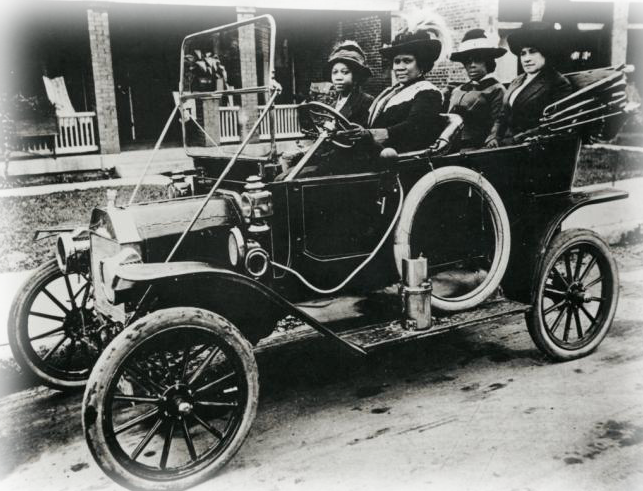
The path to fortune is never a simple one, even for today’s wealthy. In the 1900s, things were even more difficult for someone like Walker, who was not only a woman, but also a member of America’s Black community. What’s more, Walker hadn’t come from money; she was truly a self-made entrepreneur in every sense of the word.
Despite the obstacles set by society and her own personal circumstances, the entrepreneur became an inspiring millionaire, philanthropist, and activist role model for future generations. In 2020, Netflix even created a mini series starring Octavia Spencer, which depicted her life on screen for the very first time. Read on to learn more about her story:
Early Life
C.J. Breedlove Walker was born Sarah Breedlove on December 23, 1867 in Louisiana. Her parents and older siblings had been freed from a cotton plantation by the end of the Civil War. As such, she was the first child in the family that was born into freedom, as per the New-York Historical Society Museum and Library.
However, even with freedom, life was not easy for the young girl. Her family worked as sharecroppers, an occupation that didn’t yield much money. Then, at only seven years old, Walker lost both her parents, causing her to move in with her older sister and abusive brother-in-law. At the time, her sister’s cruel husband forced her to do laundry and pick cotton to earn for the family. At 14, she ran away and married a man named Moses McWilliams. Just a little before turning 17, she had given birth to her only daughter, Lelia.
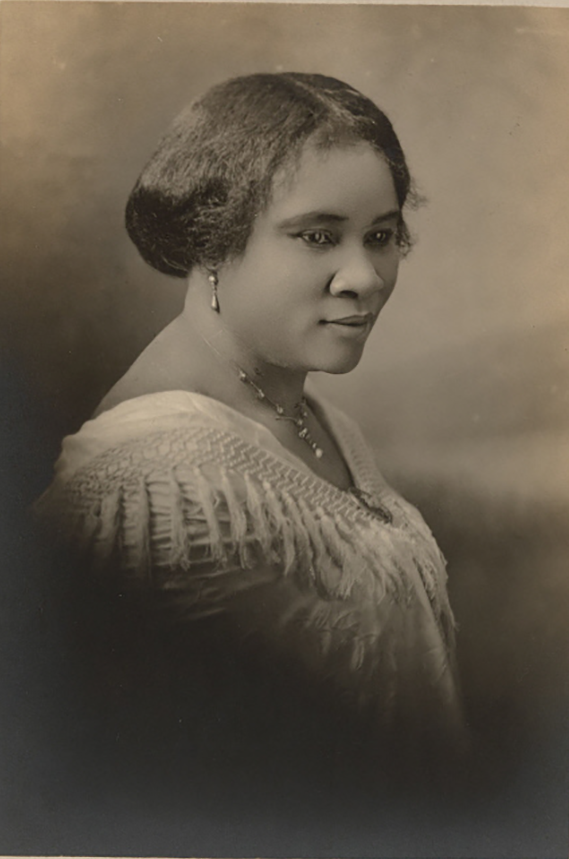
Three years later, McWilliams passed away and Walker became a single mother. She then moved to St.Louis to live with her four older brothers, who worked as barbers. Here, she made a living as a washerwoman to support her daughter, only earning $1.50 a day according to PBS. She also attended night school when she was able to.
Historians suspect that a combination of low nutrition, harmful hair products, and stress may have led to the scalp condition Walker experienced during this time. She began losing hair and her scalp was often irritated. That said, this unfortunate circumstance did eventually inspire Walker to build a powerful business unlike any other.
Commitment to the Brand
In 1904, Walker began using “The Great Wonderful Hair Grower,” a product developed by African American businesswoman Annie Turbo Malone. The product worked wonders on Walker’s scalp and hair, which began to grow and heal, according to the National Women’s History Museum.
Walker joined Malone’s team of Black saleswomen to help sell the entrepreneur’s products. This was a turning point for the young woman, who realized her passion lay in creating pommades and shampoos formulated for the hair of African American women.
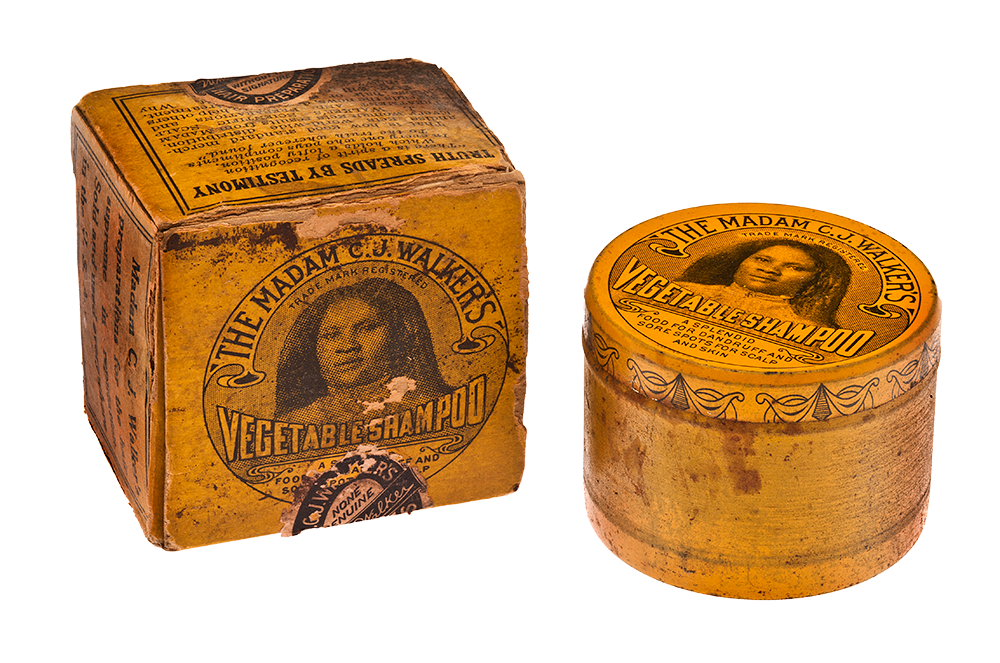
Walker began experimenting and coming up with her own formulations at home. Around this time, she also met and married an ad-man by the name of Charles Joseph Walker. It was Charles who suggested the grand pseudonym of “Madam C.J. Walker,” which Walker did adopt to sell her products.
In 1905, the young entrepreneur released “Madam C.J. Walker’s Wonderful Hair Grower.” Her line of hair products—all designed to soften, smoothen, and enrich scalp health—quickly gained a loyal following of Black women. At first, Walker sold the products personally before eventually moving to a mail-order system, as per History.
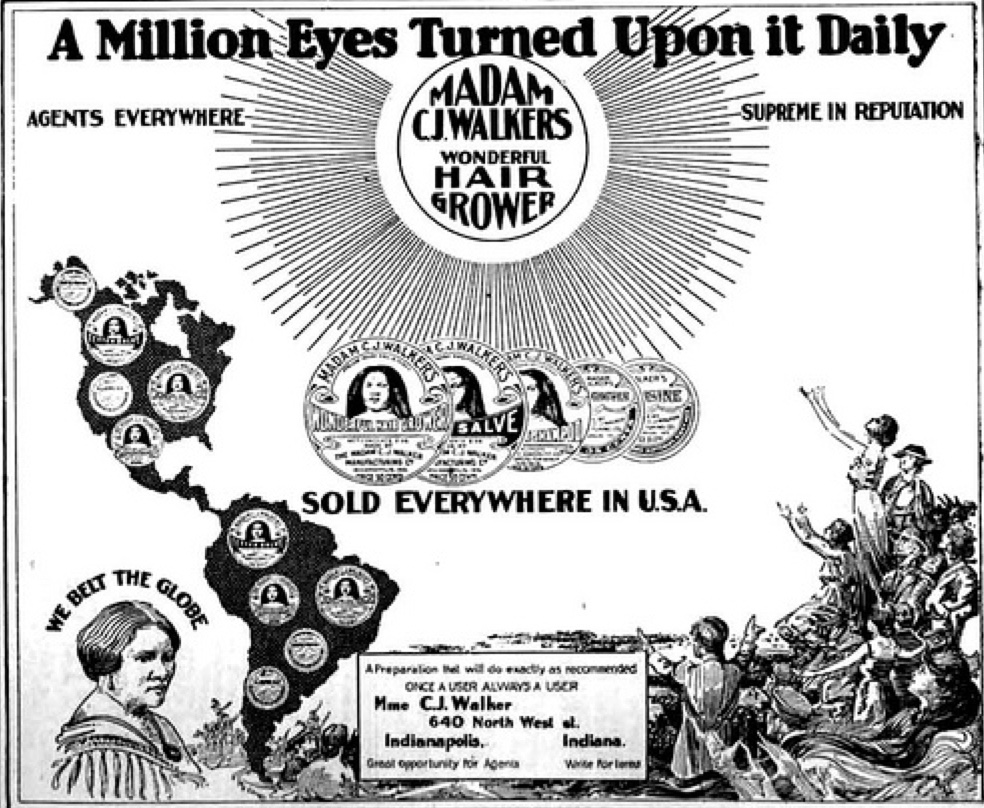
The success of her products was due in large part to her commitment to helping customers. She developed what’s known as the “Walker System,” a hair care process that’s meant to be paired with her products. Walker even did live lectures and demonstrations to show the effectiveness of her hair care line. This Walker System included “a shampoo, a pomade, strenuous brushing, and applying iron combs to hair,” according to the Library of Congress.
Building an Empire From the Heart
During the 1900s—and far beyond it—most of society would ridicule the hair of Black women, calling them unkempt, messy, and “inferior” due to natural curls. So in such a hostile world, Walker’s efforts to provide a safe space for African American women to nurture and style their hair was indeed revolutionary.
In 1908, Walker’s sales reached $6,672, and just a few years later, they’d grow to $250,000 as per PBS. Though she eventually divorced her husband Charles in 1910, her business continued to expand and grow exponentially. Walker soon set up the “Walker Manufacturing Company” in Indianapolis, Indiana.
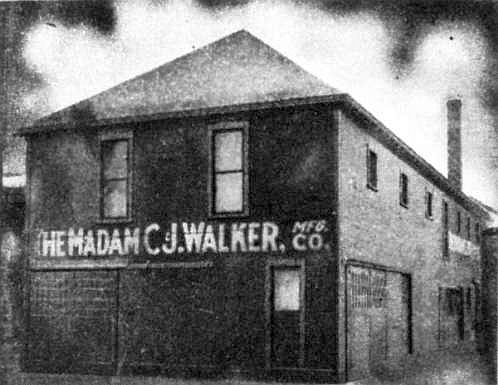
The entrepreneur continued to refine her skills as a businesswoman, even taking lessons in penmanship and public speaking. She also cultivated a refined image with good clothing and a chauffeur-driven electric carriage.
However, Walker wasn’t solely focused on making a fortune. She was an activist for equal rights, and remembering where she came from, wanted to provide more opportunities for women and men in her community. Throughout her business career, she employed 40,000 Black women and men across the US, Central America, and Caribbean, as per the National Women’s History Museum.

Hundreds of Black saleswomen received training from Walker, and earned far more than what they would’ve in low-income domestic work. These Walker Agents became the face of the brand and were trained to demonstrate the Walker System all throughout the country. Here, they’d learn a variety of business skills and strategies, and were also incentivized with rewards for outstanding sales.
To Walker, the goal was to ensure that no member of the Black community would have to endure hardships with proper employment and educational opportunities.
Philanthropy and Advocacies
Walker’s wealth and business kept growing and growing as the years went by. In 1919, what would be the final year of her life, PBS stated that sales had exceeded $500,000. By then, she had moved to a mansion in New York with her daughter, and held properties in Harlem, Chicago, Pittsburgh, and St. Louis. Her grand Italianate villa was even built beside the homes of tycoons like John D. Rockefeller.
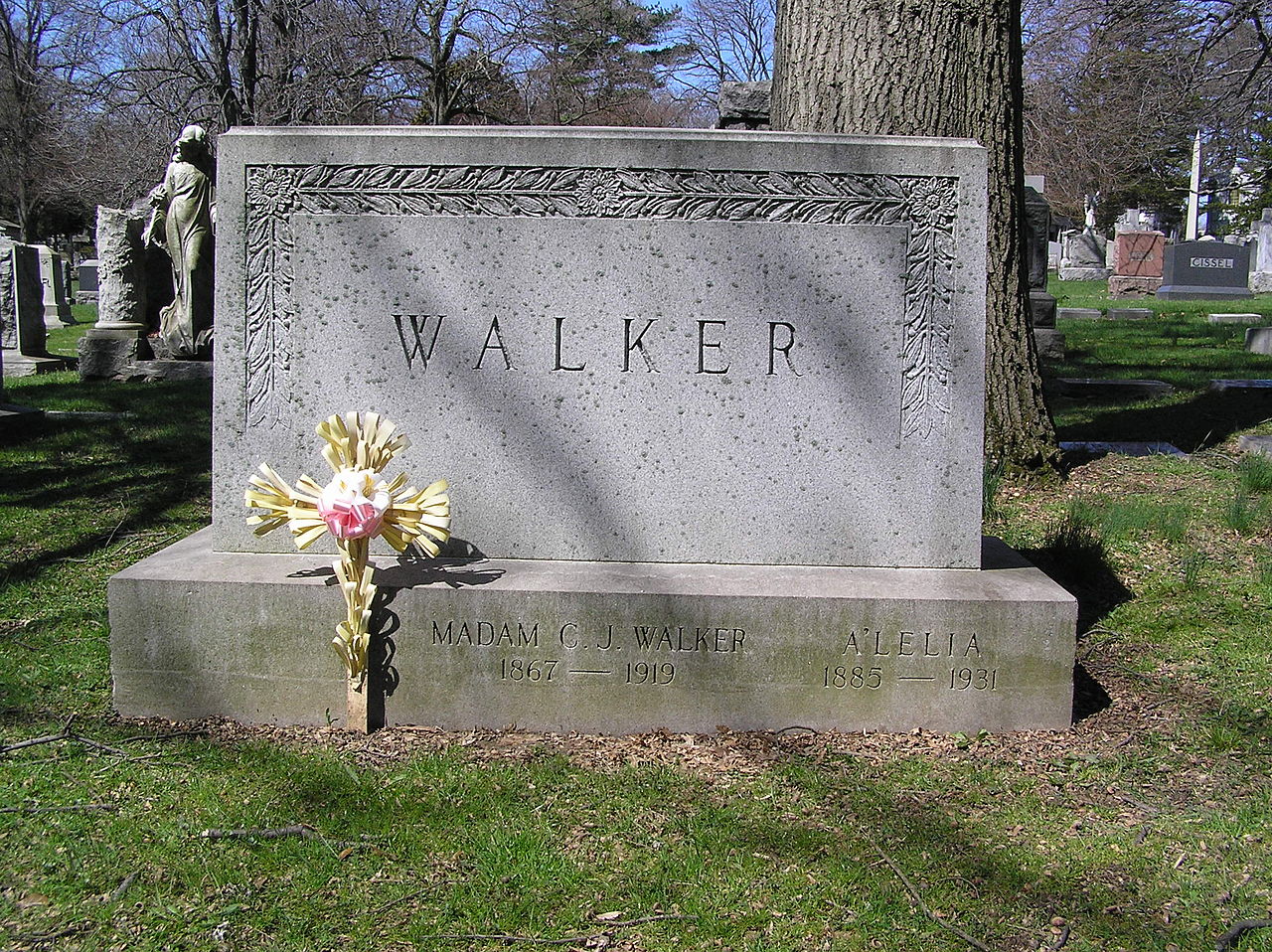
She continued to share a large chunk of her wealth through donations to a variety of charities, initiatives, and schools. This included funding scholarships in YMCA and Tuskegee Institute, as well as providing financial assistance to anti-lynching movements.
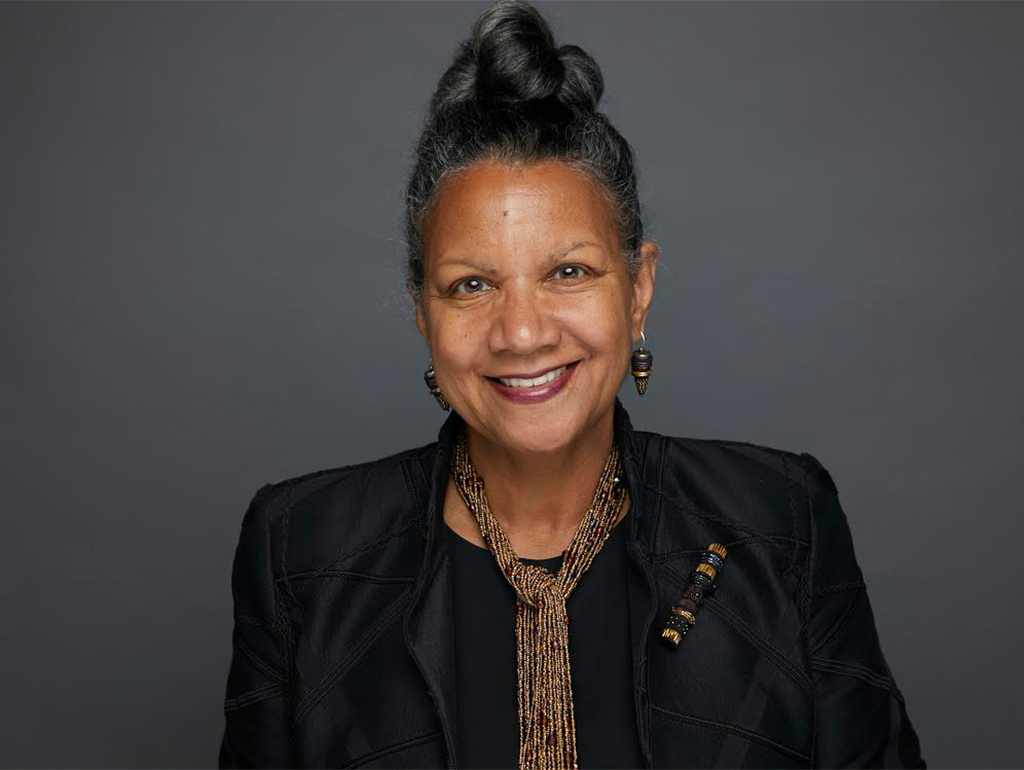
When Walker passed away at the age of 51, two-thirds of her fortune went to charities, schools, and foundations. Her daughter, Lelia, continued her mother’s legacy through the business and even supported artists and luminaries during the Harlem Renaissance. Today, Walker’s brand lives on through a new hair care line called “Madam by Madam C.J. Walker.” The late entrepreneur’s great-great-granddaughter, A’Lelia Bundles, teamed up with Walmart to create the line that continues to nourish the hair of Black women across the country.

Banner photo via Wikimedia Commons; feature photo from the New-York Historical Society website.





